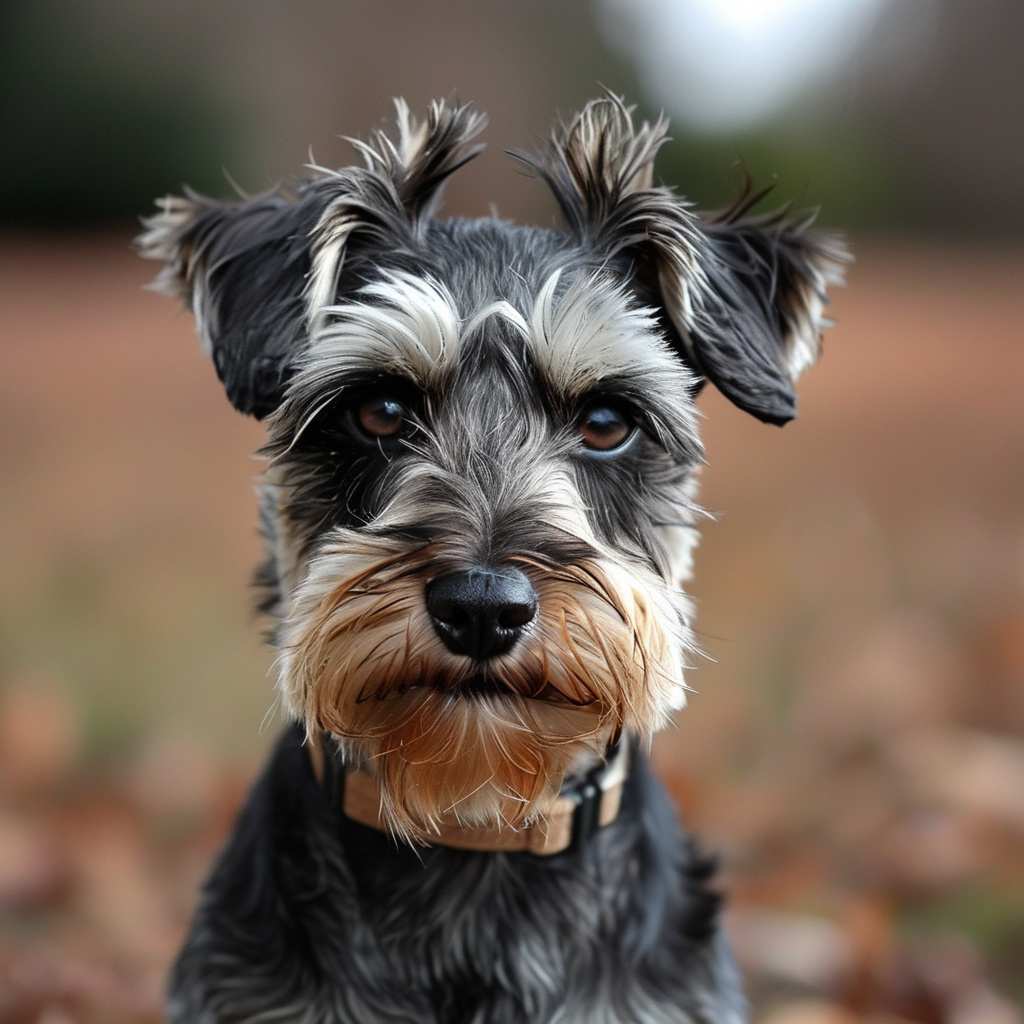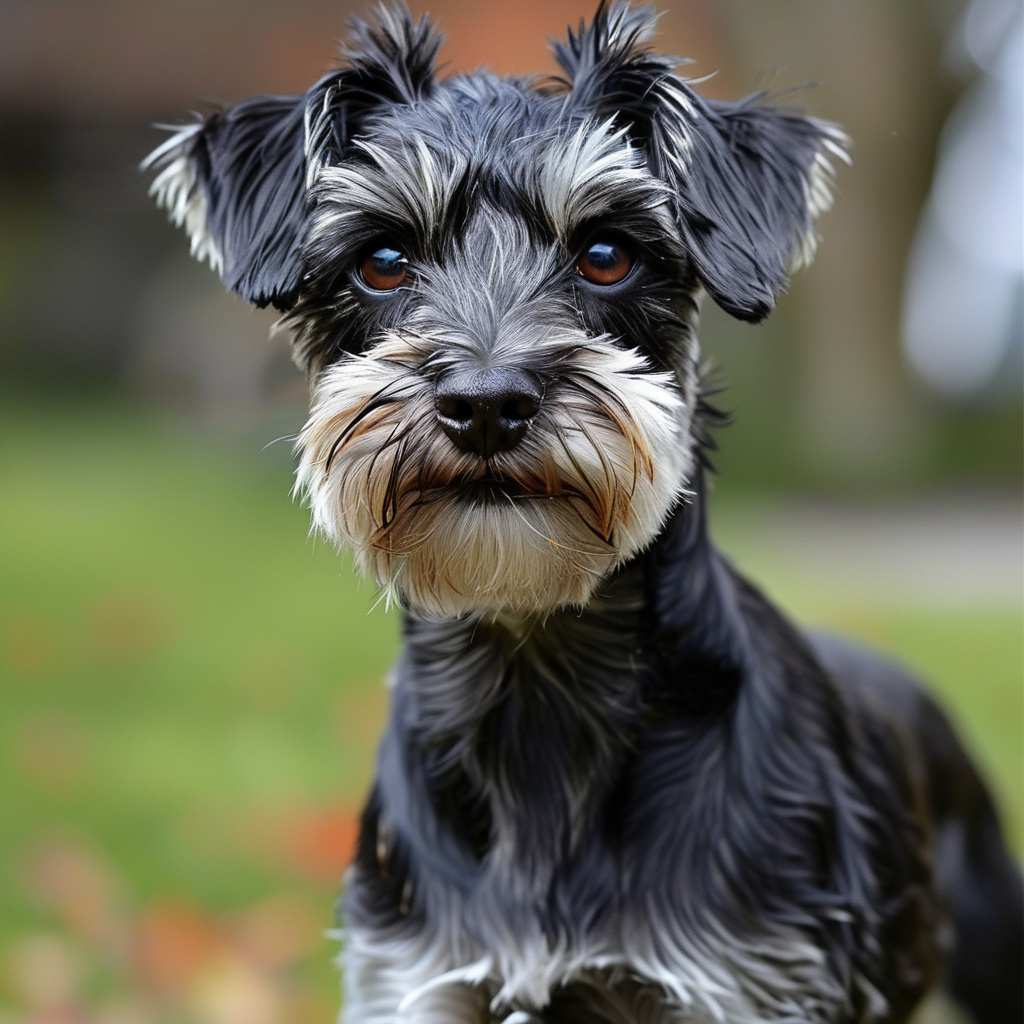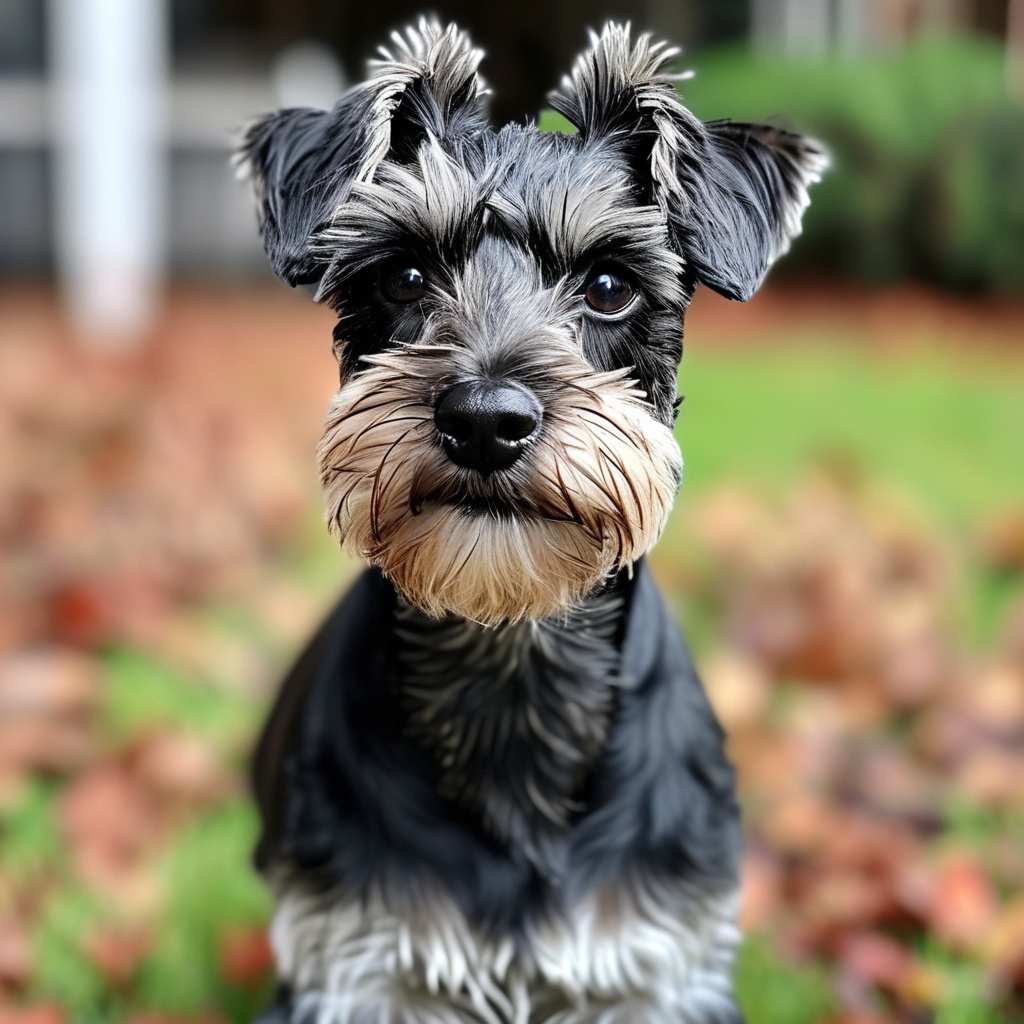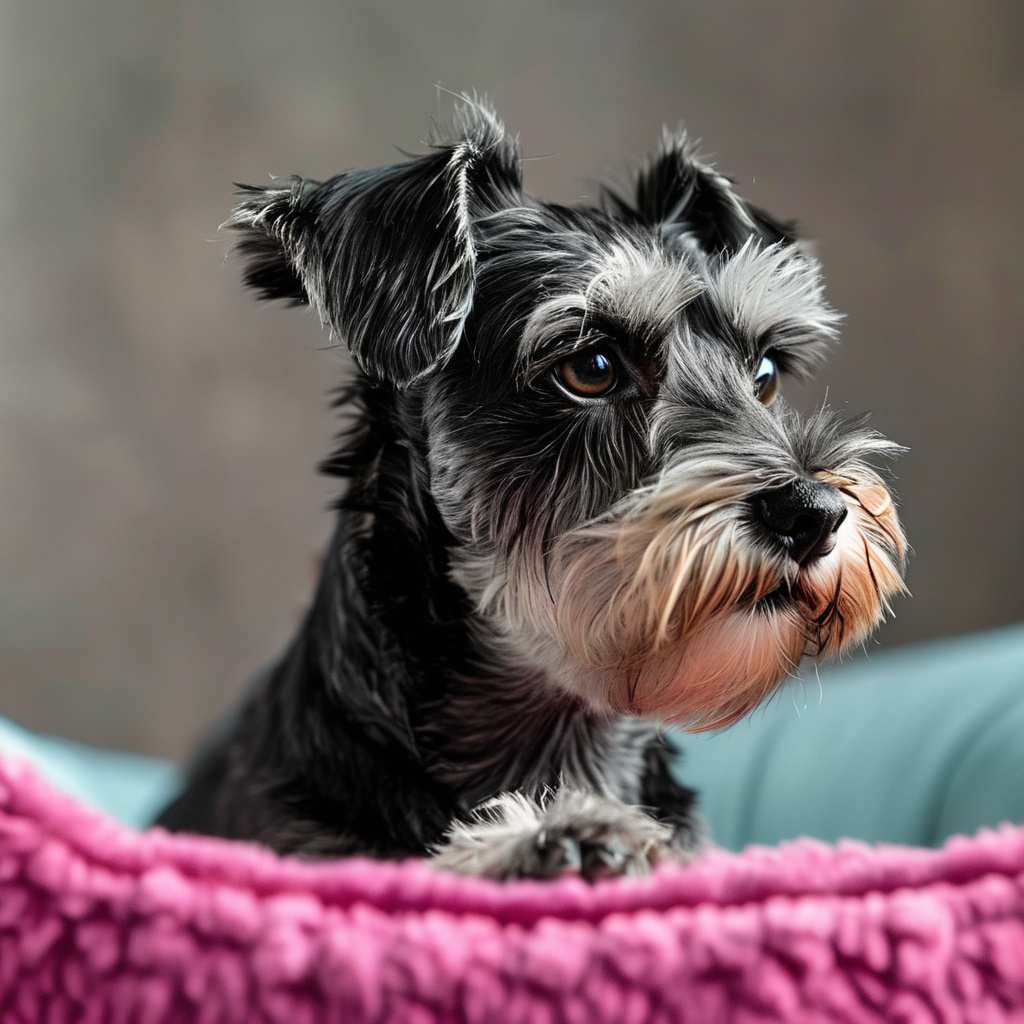 Introduction:
Introduction:
The Miniature Schnauzer, originally known as the wire-haired Pinscher, has evolved into one of the most beloved dog breeds in the world. Recognized for their strong, square build and cheerful, lively personality, these small but sturdy dogs are perfect companions for families and individuals alike. With their thick coat, distinct grooming needs, and playful yet stubborn temperament, Miniature Schnauzers require proper care and attention. This article explores the breed’s history, grooming tips, health concerns, and personality traits, offering everything you need to know before welcoming one of these adorable dogs into your home.
This breed really took off in the early 20th century near Frankfurt, Germany. Back then, they were still called wire-haired Pinschers. These dogs are descendants of small dogs that were used to guard farms and hunt rodents (mainly rats).
Today, we know them as very cheerful dogs, full of energy, attached to their family, but also combative. Today’s post will give you a little more information about this beautiful breed.
Related Post: Should We Let Our Cat Outside? Understanding the Risks and Benefits for Urban Cats
The Miniature Schnauzer has a strong, square, and harmonious silhouette. This breed is typically recognized by a slightly sloping back, a long chin, a sickle-shaped tail, and slanted hind legs.
This breed typically reaches the following withers:
Dogs: 30-35 cm
Bitches: 30-35 cm
Related Post: Understanding Allergies in Dogs and Cats: Causes, Symptoms, and Treatment
 The standard weight is between 4-8 kg, regardless of sex.
The standard weight is between 4-8 kg, regardless of sex.
The Miniature Schnauzer comes in four different colours: black, pepper and salt, white, and black and silver.
The coat is thick and long, with a dense undercoat and a fairly long top coat.
It’s a miniature version of the SchnauzerSchnauzer, like a poodle, but it’s not a dwarf.
Schnauzers are known for being greedy (though this trait is probably a problem for most breeds). It’s important to keep an eye on what our four-legged friends are eating because if we don’t, this breed will quickly become overweight, which won’t be good for their health or condition.
The going rate for a healthy puppy with a ZKwP pedigree is around 2,500 PLN. It’s also a good idea to check which kennel the dog comes from and whether the breeder has health checks and vaccinations. It’s also a good idea to ask about the health of the dog’s parents and grandparents. If the breeder is reliable, they should be able to show you the details of the older generations.
Related Post: Caring for Your Pregnant Cat: Essential Tips for a Healthy Pregnancy and Kittens
Grooming the Schnauzer
Related Post: The Unique Charm of Thai Cats: A Return to the Original Siamese Look
 As a general rule, trimming is better than clipping for removing dead undercoat. Schnauzers have a distinctive rough coat, and it’s not as easy to maintain as other breeds. Clipping can change the colour and texture of the coat, which can affect its value. These dogs don’t shed, so it’s important to comb (never dry) and trim their coats often to remove dead fur. Brushing is a really important grooming treatment for them. It helps get rid of dead hair and speeds up the renewal of new, healthy hair.
As a general rule, trimming is better than clipping for removing dead undercoat. Schnauzers have a distinctive rough coat, and it’s not as easy to maintain as other breeds. Clipping can change the colour and texture of the coat, which can affect its value. These dogs don’t shed, so it’s important to comb (never dry) and trim their coats often to remove dead fur. Brushing is a really important grooming treatment for them. It helps get rid of dead hair and speeds up the renewal of new, healthy hair.
The brush should have straight teeth with smooth tips so it doesn’t get tangled in the fur and doesn’t tear the hair.
The issue could be the quilt that forms on the Schnauzer’s hair, which should be combed out as soon as it’s noticed. It’s not worth cutting it out because it will damage the hair structure.
During the winter months, it’s a good idea to get a coat or suit for a small stroller, as the coat can get tangled in the snow and become difficult to remove.
Schnauzers need to have their ears cleaned regularly to remove hair that can grow into the ear canal. It’s not painful for the dog, but it’s best to get this done sooner rather than later.
How often should you bathe a Schnauzer?
The answer is pretty straightforward: bathe your dog whenever it’s needed, whenever they get dirty. If it’s not necessary, it’s best to bathe every two to three months. Also, it’s a good idea to bathe your SchnauzerSchnauzer about 10-14 days before trimming.
What if the dog gets dirty a lot, and we don’t want to bathe it too often? Dry shampoo powders are great for getting your dog clean without having to bathe it too often.
Health
 This breed typically lives for about 12 to 15 years.
This breed typically lives for about 12 to 15 years.
Schnauzers are usually healthy dogs, but they’re prone to certain illnesses we should know about. What kinds of diseases are we talking about here?
Food allergies
Eye diseases like retinal atrophy, cataracts, or lens dislocation.
Comedo syndrome is a skin disease that causes black, hard, and sharply defined formations to form on the skin. The disease progresses without any pain for the dog.
Fanconi syndrome is a congenital disease of the urinary system that results in excessive excretion of important elements and substances such as sodium, potassium, phosphates, bicarbonates, and amino acids. You might notice your dog showing some of the following symptoms: apathy, weight loss, increased thirst, and frequent urination.
Diabetes mellitus is more common in older dogs, but it can also affect younger dogs (about 1.5%). Similar symptoms to those of Fanconi syndrome can be seen, such as frequent urination, weight loss, and increased thirst. Diabetes mellitus is a serious disease. If you have any concerns that your dog may have this condition, it’s important to see a vet as soon as possible.
Character
The SchnauzerSchnauzer has changed quite a bit in the last 20 years or so, at least in terms of its character.
This is all down to the introduction of American dogs of this breed. This mix had a really positive effect on the dogs’ character, making them look a bit more like their giant brothers.
A lot of people think a miniature schnauzer is the perfect dog for a small apartment. Yes, it is, but there is one very important thing to keep in mind.
It’s important to make sure you give this dog plenty of training. It’s really tough to get a bad habit out of an adult schnauzer, so you’ve got to make sure you reinforce the good ones.
Schnauzers love to beg for food, and they learn pretty quickly that they can get their owners to do pretty much anything by barking. If you give in to their demands just once, they’ll know that all they have to do is bark patiently to get what they want.
Another thing to think about is walks. These dogs, despite their small size, need a lot of exercise and fun. It’s difficult to train them to obey on a leash; they can be really stubborn on their owner’s side.
The miniature SchnauzerSchnauzer is a happy, adaptable dog that will fit right into your family. Since these dogs don’t shed when they’re taken care of properly, the SchnauzerSchnauzer is also a great choice for people who don’t want to clean their home every day, like you would with a golden retriever.
He’s a great dog who loves to be the centre of attention, so don’t be surprised if he comes out with a friend’s visit to show off his skills from bouncing on your knees to asking for an invitation to play. One thing is for sure: a Schnauzer will keep you entertained.
Conclusion:
In conclusion, the Miniature Schnauzer is a joyful, energetic breed that can bring plenty of entertainment and affection into a household. With proper training, grooming, and regular health checks, they make fantastic companions for families or individuals, especially those living in smaller homes or apartments. While they may be prone to certain health issues, maintaining their diet and lifestyle will help ensure a long, healthy life. By providing the right care and attention, your Miniature Schnauzer will thrive and remain a loyal, loving part of the family for years to come.
FAQs:
- What is the origin of the Miniature Schnauzer?
The Miniature Schnauzer originated in early 20th-century Germany, near Frankfurt, where it was first called the wire-haired Pinscher. - What are the key grooming needs for a Miniature Schnauzer?
Regular trimming, brushing, and ear cleaning are essential to maintain their rough coat. It’s important to avoid clipping, as it can change the texture of their fur. - How long does a Miniature Schnauzer typically live?
The average lifespan of a Miniature Schnauzer is between 12 to 15 years. - Are Miniature Schnauzers prone to any health problems?
Yes, they can suffer from conditions like food allergies, eye diseases, diabetes, and skin issues like Comedo syndrome. - Do Miniature Schnauzers require a lot of exercise?
Yes, despite their small size, Miniature Schnauzers are energetic dogs that need regular exercise and playtime. - What colors do Miniature Schnauzers come in?
They come in four colors: black, pepper and salt, white, and black and silver. - Are Miniature Schnauzers good for apartment living?
Yes, they adapt well to apartment life, but they need plenty of physical activity and mental stimulation to stay happy and healthy.
References:
- American Kennel Club – Miniature Schnauzer
- PetMD – Miniature Schnauzer Breed Information
- VetStreet – Miniature Schnauzer Breed Profile
- Dog Breed Info – Miniature Schnauzer
- The Spruce Pets – Miniature Schnauzer Overview
- Purina – Miniature Schnauzer Information
- American Kennel Club – What to Know About Miniature Schnauzers